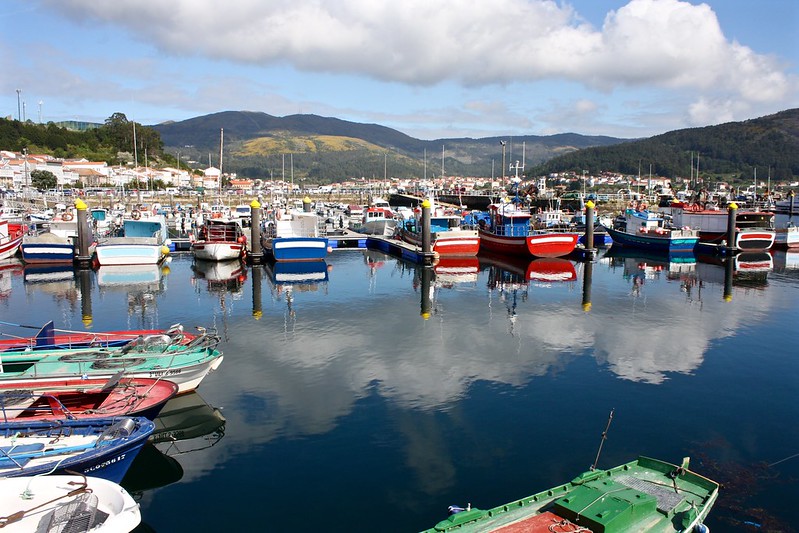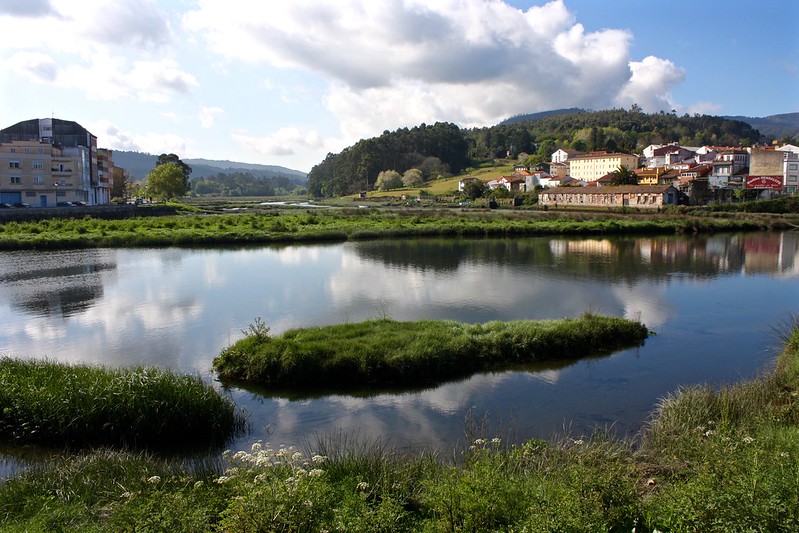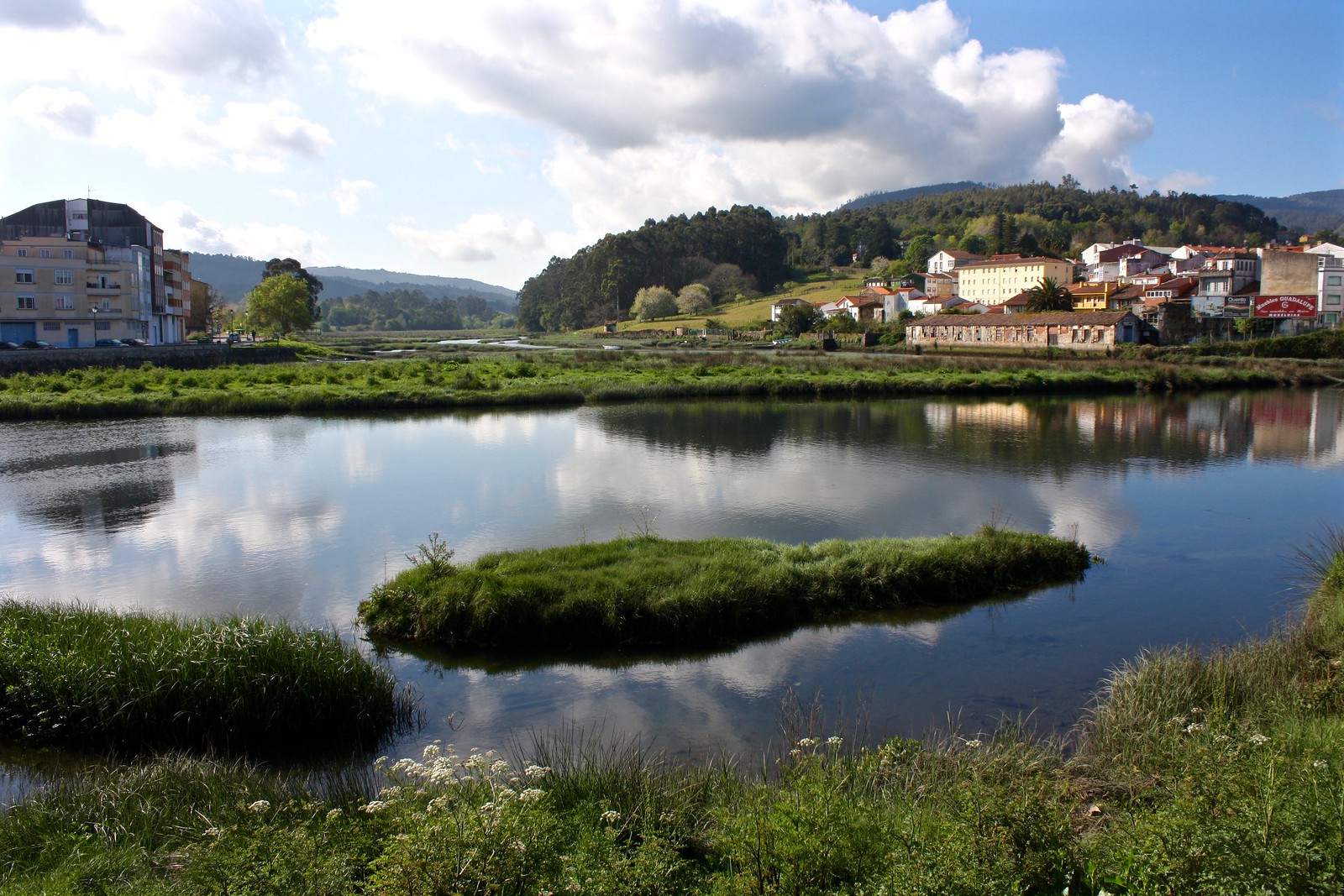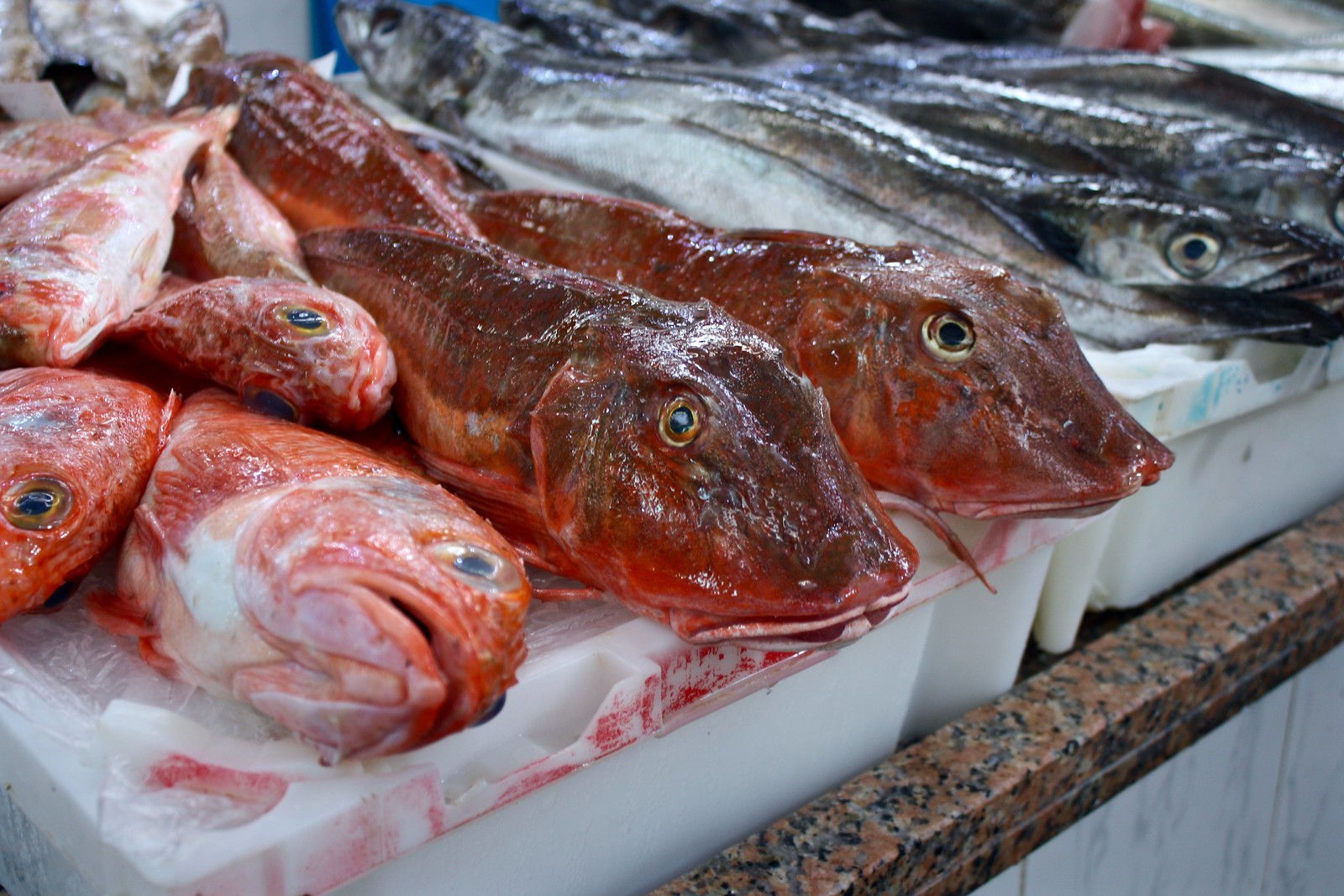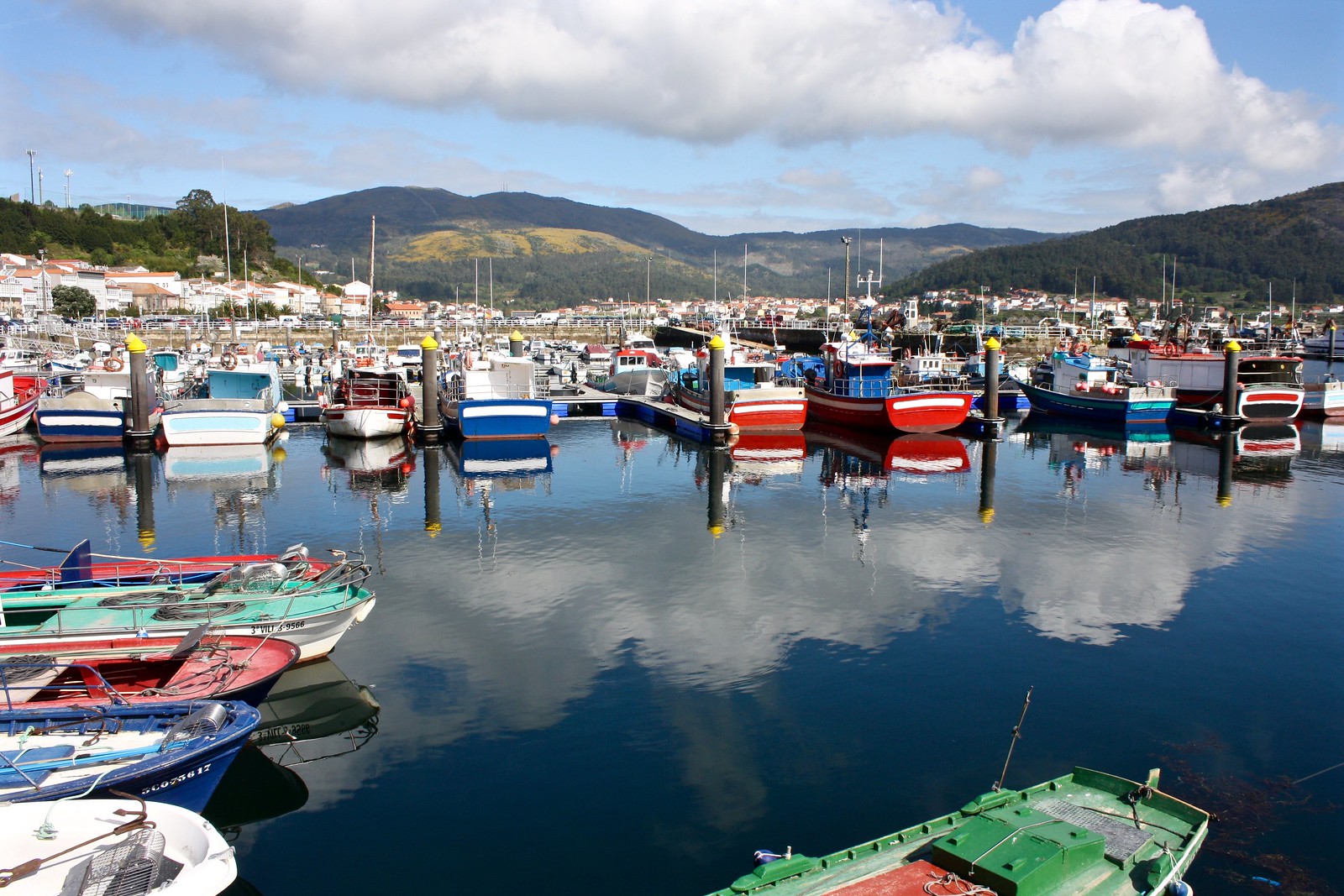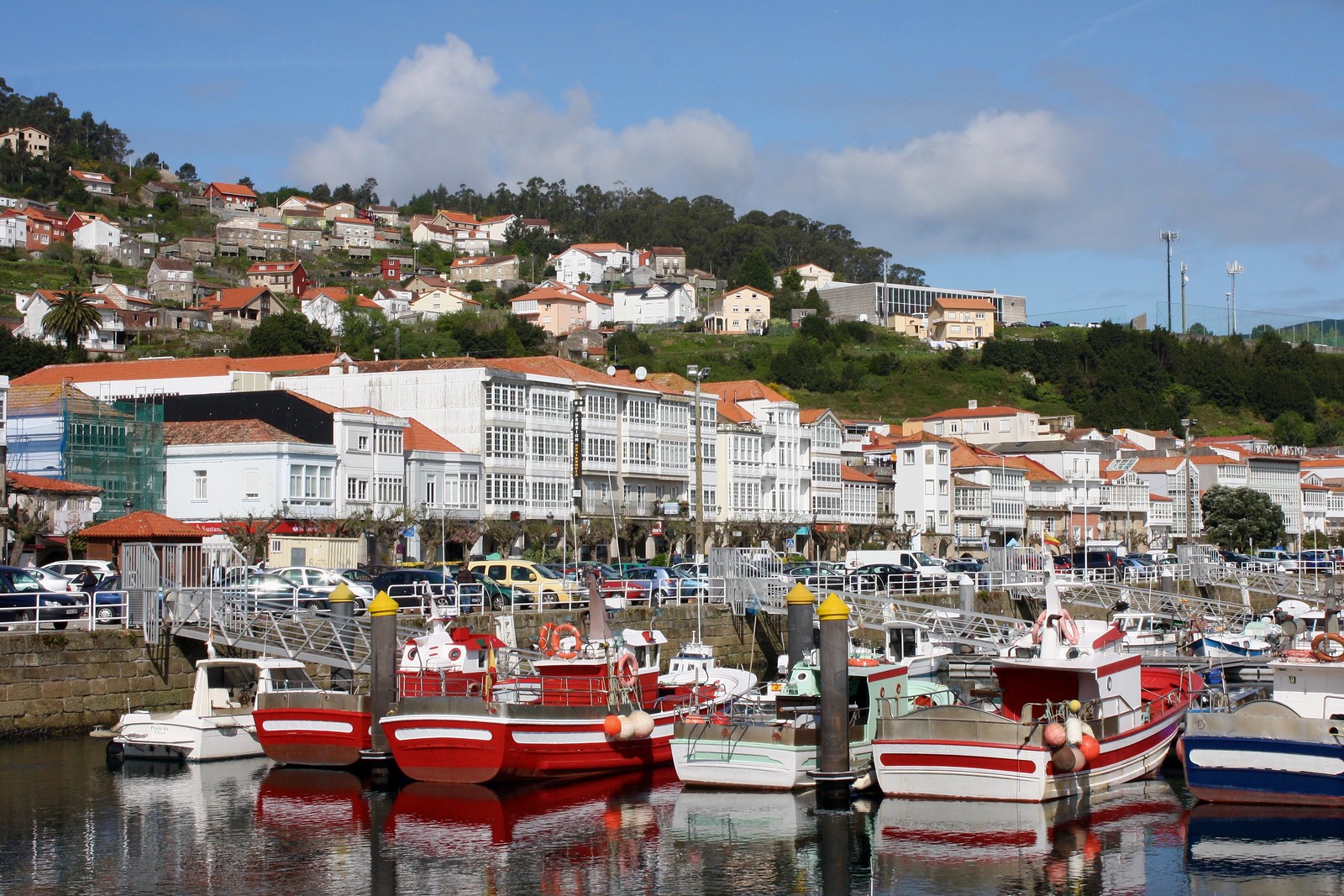Many folks visit
Santiago de Compostela because they’re drawn to the medieval mystique of the
Camino de Santiago, which ends in the city. A popular daytrip from Santiago involves heading out west to the tiny coastal town of Fisterra, the “Lands End” of Galicia, which many pilgrims consider the
true ending point of this pilgrimage that runs across northern Spain. A mighty lighthouse guards craggy cliffs, what the Romans considered to be
finis terrae, the ends of the earth.
Sadly, many people hop on charter buses that make express runs between Santiago and the Atlantic coast, completely bypassing the intervening countryside. It’s a real shame because there’s so much to see and do in between those two points, from charming fishing villages to secluded beaches and even waterfalls.
Over the next couple of weeks I’m going to spend some time on the blog sharing with y’all the best places to see on your way from Santiago to the End of the World. Today, let’s visit our first two stops: Muros and Noia.
Noia
For centuries, Noia was considered the
Port of Santiago because it was the closest link to the coast from Santiago. Maritime trade defined the city’s economy in the Middle Ages, and even today the town’s
mercado de abastos or local market is still one of the major centers in Galicia for fishers to offload their catches on the west Atlantic coast. The market’s entrance opens onto a boardwalk that runs along the Vilacoba River as it empties into the estuary. You couldn’t find a better place to put a market!
This tiny little town is a great place to check out two churches designed in the
gótico mariñeiro style, or
“Sailor’s Gothic”—small parish churches built in a single nave (i.e., no side aisles) with vast arches that span the entire width of the church without any supporting columns. The Church of Santa María a Nova is a cute little place with a vast cemetery out back where you can see headstones that date back almost a thousand years. The Church of San Martiño anchors the heart of the old town. Its truly impressive west façade rises over a little plaza: a pretty rose window floats above grand teal doors, which are crowned by statues of the twelve apostles and heavenly musicians.
As is the case in most small towns in rural Galicia, speaking
the Galician language is the norm here. I came across this funny bit of pro-Galician graffiti scrawled on a wall in an old town side street, written as if it were Portuguese: “
Fala-lhe Galego aos turistas!” which means “Speak to the tourists in Galician!”
Muros
Further down the estuary, with an actual harbor to speak of, is Muros. My Galicia guidebook uses the adjective
“enxebre” to talk about this town; that word translated means “characteristic of a region, authentic, pure, typical, genuine,” and I think that’s just the perfect way to describe Muros.
Most of Muros is simply one long promenade along the harbor, with grand old homes opening out onto the waterfront and shaded, narrow alleyways creeping up the hillside. Trace one of these winding roads far enough and you’ll find the Church of San Pedro, which really ticks off all the boxes that make Muros such an
enxebre Galician town: a small, Romanesque-era church with a Baroque bell tower to the side, a
cruceiro or granite stone cross out front in the plaza, and beneath the tree limbs a moss-covered
hórreo or granary to store corn.
You can’t beat pulling up a chair at a terrace in the main square by the town hall, be it early morning for a cup of
coffee or late afternoon for a little snack, and taking in all the bustling traffic—both on the roads and in the harbor.
Which of these two villages would you most like to check out? Tell me below in the discussion thread!
